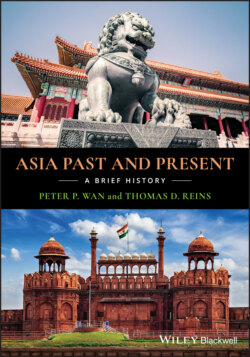Читать книгу Asia Past and Present - Peter P. Wan - Страница 18
Cultural Categories
ОглавлениеSocial scientists have classified human social development into four broad groupings, or ways of life, based on the principal means by which people organized and exploited their surroundings: Paleolithic, Neolithic, Pastoral Nomadic, and Civilized, the last of which can be divided into numerous categories and subcategories. As these ways of life are not mutually exclusive, some or all of them have been practiced at the same time in Asia (and around the globe). However, such drastically different customs typically produced conflict among diverse lifestyles when in close proximity. Thus, as farmers occupied gatherers’ former hunting grounds after approximately 10,000 BCE, Neolithic and Paleolithic communities clashed; later, Neolithic farmers resisted but gradually came under the domination of Civilized urban elites beginning around 4000 BCE in Mesopotamia and Egypt, by roughly 3000 BCE in India, and just after 2000 BCE in China. And traditional civilizations based on agricultural productivity began colliding with civilizations based on industrial output after roughly 1800 CE. Although hunting communities, farming societies beyond the reach of civilization, and traditional agricultural civilizations declined in numbers, wealth, and/or power, they typically remained as vestigial ways of life transitioning to oblivion or “modernization.” But the Paleolithic and Neolithic periods account for the majority of time that human beings have existed; Pastoral Nomadic and Civilized ways represent relatively new human arrangements.
